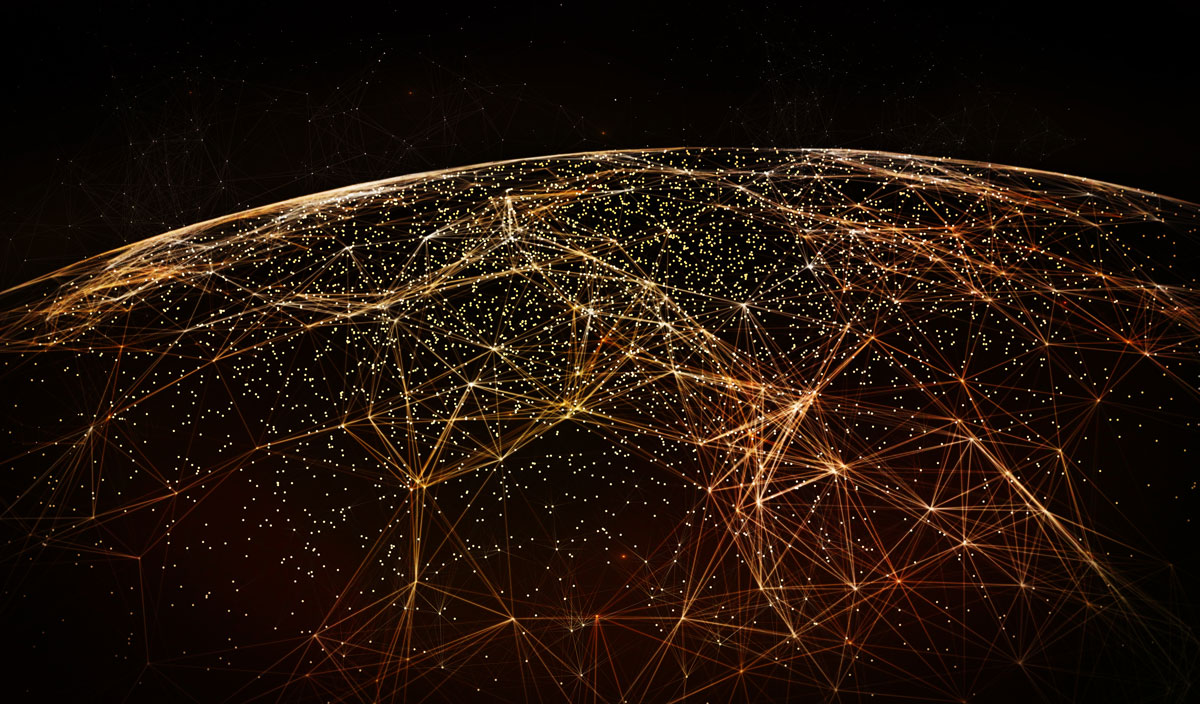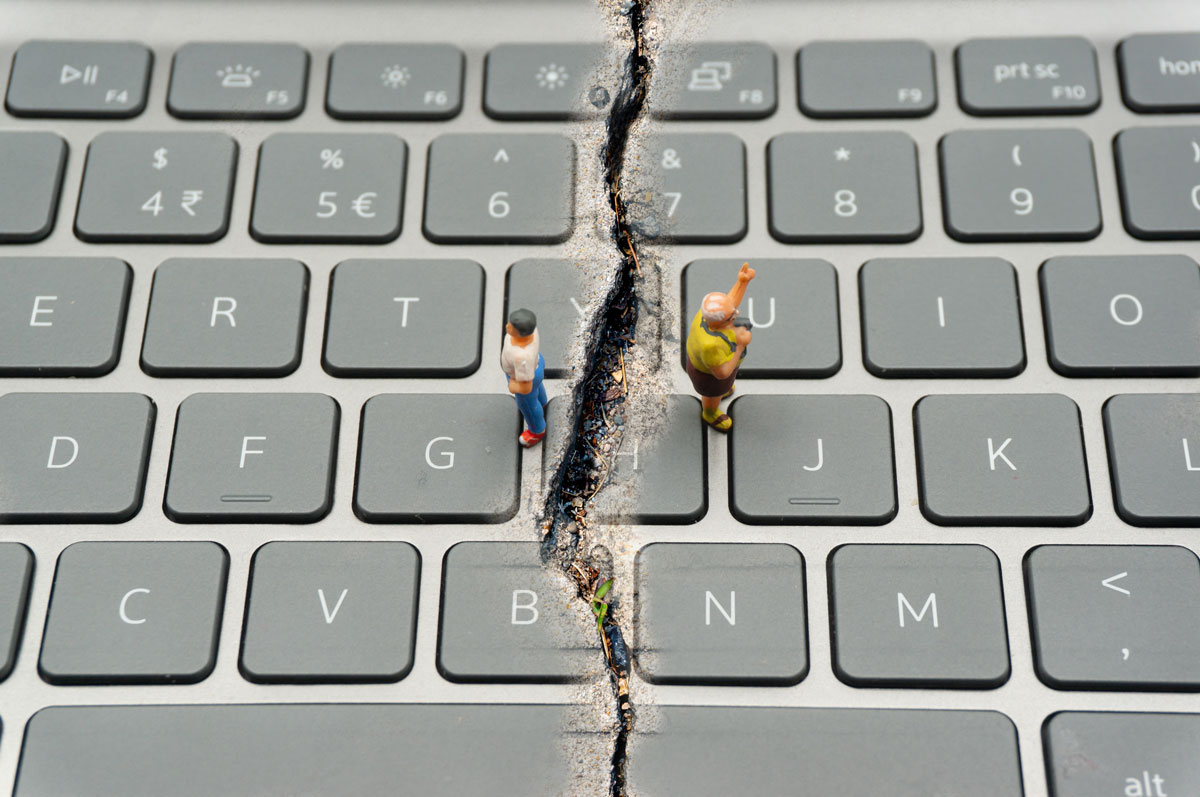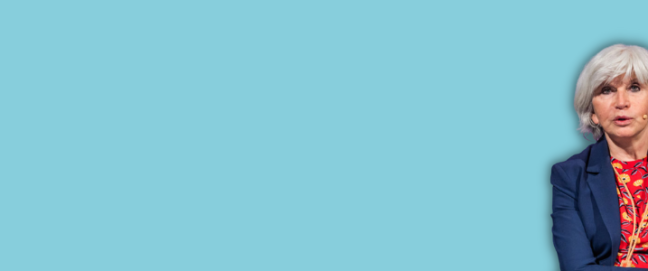Switzerland’s Fondation Botnar has a mission familiar to the foundation world: improving the health of youth people. But the foundation’s specific focus is the inclusion of youth voices and the equitable use of artificial intelligence and digital technology – a new twist on an old song.
We wanted to understand more about the foundation’s journey, the way it sees digital and AI as part of youth well-being, and how it fits into the broader picture of philanthropy in Switzerland. So I sat down with Stefan Germann, the CEO at Fondation Botnar, at the Philea Forum in Barcelona to dig a little deeper.

‘We want to understand, as a foundation, how are young people engaging with digital, both on the upside and the downside. So that’s why we invested strongly into digital solutions’, says Germann. Photo credit: Shutterstock
Elika Roohi: Fondation Botnar was founded in 2003, but it really became the Foundation we know today when you joined in 2017. Can you tell us about that journey?

Stefan Germann is the CEO of Fondation Botnar
Stefan Germann: Well, that goes probably to the history of the family. When, tragically, Marcela and Octav Botnar’s only child died in a car accident, the couple decided to put all their funding over the long-term into a foundation. While Octav was alive, they funded several large projects in their daughter’s name, but after he passed away, Mrs Botnar set up Fondation Botnar in 2003. But then, unfortunately, very quickly thereafter she had dementia and wasn’t able to influence the direction of the foundation. It was a very small caretaker foundation run by a law firm. They did grantmaking of $300,000-$400,000 a year, generally supporting some children’s charities. It was only in 2016, after Mrs Botnar died and the inheritance was sorted out, the foundation inherited a very large estate. Then they decided to set up a management office. So we only started really significant grantmaking in 2017. I started on the first of February 2017, five years ago. I was the first member of staff and first CEO.
The foundation works on the health and development of young people. Why do you think technology is an important way of accessing that?
Our main focus is on 10–24-year-olds. Why have we chosen that? When we started to set up the management office with a strategic philanthropic grantmaking coach, we did a deep analysis. Our statute is clear: it needs to be within the field of health, education, and nutrition of children and young people according to the statute. But we knew we wanted not to be a traditional grantmaker, but a change-maker. So, we were thinking about how we can influence ecosystems and systems change where young people are engaged.
For our strategic approach, we looked at some of the key long-term global mega-trends that are shaping society significantly. Within that, we prioritised three big issues. One of them was the demographic transformation – and that’s young people, adolescents. Today, I think there are 1.8 billion adolescents. Never in human history have we had a larger population of young people. But whilst there are so many, less than one or two per cent of international development assistance is going into the health and well-being of young people. So, we identified that adolescents, such a large population, are a huge gap. The second big demographic trend is urbanisation. According to the UN, by 2050, probably 70 per cent of the world’s population will live in cities. But of course, with cities there are many flavours. We identified that the intermediary cities, or the fast-growing cities, the ones that are a bit smaller than these megacities – there are very few actors in the foundation space working there. In the big cities, you had the Bloomberg, Rockefeller, you had all these big megacities initiatives. But you realise there’s almost no foundation working in that intermediary city space. And the third megatrend was AI and digital. A lot of people underestimate how the influence of data and AI, especially as it moves to become a general-purpose technology, is going to be more transformative to the world than electricity was. Imagine a world with no electricity, no light. There was no internet. We can almost not imagine a world before electricity and after, but that transformed society, economics, everything. AI started, the first conference in AI was in 1956 at Dartmouth in the US. Today we are at that intersection of sudden data explosion, algorithmic deeper sophistications with neural networks, deep learning – it’s no longer just machine learning using statistical pattern recognition. And soon, maybe quantum computing coming in as well. If you combine the data that we generate, computing power multiplying, we will see things in 50 years that we have never really experienced before. And it will transform the world, many believe, more fundamentally than electricity.
With digital tools and AI, what does that look like in your programmes?
We believe that these are enabling tools. What we want to transform, or contribute to transforming as a foundation, is enhanced well-being of young people. We are using what we call a relational well-being approach. And we understand relational well-being to mean that, as humans, we don’t exist in isolation of ourselves. We only exist in relationship to others and the environment. So to us, we are thinking of wellbeing as an emerging property – that is if I’m well within myself, but I can only be well within myself, and if we are not well with our environment, and our environment is not well, then it just doesn’t work. It’s a systems view of life.
Today, I think there are 1.8 billion adolescents. Never in human history have we had a larger population of young people. But whilst there are so many, less than one or two per cent of international development assistance is going into the health and well-being of young people.
Now coming to digital, you have to understand how young people are engaging with digital. Some call it the digital natives. You grew up digital, and you think more digital than many of us who are about 40. We still have been very much analogue-educated, and we think analogue. But the world is rapidly moving into that digital space. So, we want to understand, as a foundation, how are young people engaging with digital, both on the upside and the downside. So that’s why we invest strongly into digital solutions – in health, and now increasingly as well focusing on other domains. And we are very practical, so, for example, Afya-Tek programme with D-tree and other partners, our programme in Tanzania, is a good example, where we are funding what is really an integrated digital health system at the frontline of healthcare, where young people’s health is enhanced through an integrated digital response from diagnostics to biometrics. We also realised – and that’s why we worked with the Lancet and Financial Times Commission ‘Governing health futures 2030: growing up in a digital world’ – that there are big issues around health data. Who owns the data, what do you do with data? And we are taking a very strong human rights angle on it. One of our programme portfolios is a partnership with Amnesty International: RIGHTS Click. The programme that really strives to understand what do human rights or young people’s or child rights mean in the digital age, and how do we enhance the capacity of young people to engage in these technologies in a way that fosters their well-being, not reduces it.

Bridging the digital divide. Photo credit: Shutterstock
How does Fondation Botnar think about technology access and bridging the digital divide? Is that part of your work as well?
That is an important part. Given that our focus is more on urban populations, I think there is a bigger policy issue that we have to acknowledge, and that’s being tackled by the broadband commission and others, that there is a divide between rural and urban. We are not focusing as much on that rural divide, but within urban you have a big, big difference with access to technology across households. So whilst more urban households have access to technology – almost all households have access to a mobile phone – that doesn’t mean that the young person has access to that mobile phone. That mobile phone might be the parent who owns the phone, and then you start very quickly to face issues in some countries where data is very expensive. And that’s really where we need to push hard through some of our policy work to make data packages for young people affordable. Covid exposed that need more so. As schools were shutting down, even in low- and middle-income countries education moved into the digital space. What do you do if you have five children in the household and one device that’s shared by the mother and the government will not provide anything else? An interesting conversation I had with someone in Nigeria, was about how Nigeria currently heavily subsidises fuel, and it’s very unpopular to remove these fuel subsidies. But what if the government will shift – take fuel subsidies away, but then subsidise data for under-30-year-olds? That will be very popular with the under-30. It would actually win two things. We would reduce subsidies for fossil fuels that drive climate change, while also enhancing access in the digital space for young people. Rather than removing, you shift subsidies. I think government should be focusing more on that.
Several years ago, we did an issue on foundation investments and we ran a piece arguing that foundations should invest in data. What do you think about that idea? Is it a frontier for philanthropy?
It’s an intriguing article. And I like [the author’s] analogy about where the German word for foundation came from – that the root is historically connected to the idea of monasteries protecting knowledge and education in libraries, and secured healthcare in hospitals.
A lot of people underestimate how the influence of data and AI, especially as it moves to become a general-purpose technology, is going to be more transformative to the world than electricity was. Imagine a world with no electricity, no light.
I think we have to differentiate the types of data. There is personalised data or human data and there is non-human data. The problem is that we have currently a system – and this is mentioned in the article – where we have this idea that data is the new oil. But actually, I think we need to challenge that paradigm and change the mindset of seeing data as a commodity like oil, like coal, because that’s a scarcity mindset. The tech sector has exploited that scarcity mindset, using the same language, like data mining. Data is actually very cheap to replicate, and very cheap to distribute. We should move from a mindset of scarcity into a mindset of abundance. That’s the first place where I differ from the current model thinking on extracting value out of data. The second problem is that we are, at the moment, really at risk. If you look, if you took my health data, my genomics data, my DNA data, my clinical data, my behavioural data, in the end of the day, that’s me. If we talk about people’s data, we are talking about ownership of people. Would we, as a foundation, want to be the owners of people? I have said before we are at risk of becoming modern-day data slaves. Not only by big corporations, but by states as well.
When you look at the philanthropy sector, what are good innovative examples of foundations working with AI and digital tools?
There’s a collaborative effort, where the Wellcome Trust and some other foundations, including we as Fondation Botnar, have joined together for a health research collaborative. It’s called I-DAIR, the International Digital Health & AI Research Collaborative. It’s investing in the upside of uncertainty. We don’t know yet whether that will work. The idea is really modelled around the CERN, which was bringing countries together to pool their research funding, and the best brains to work together on public goods. And so, I-DAIR is basically there to bring governments together – specifically smaller states who don’t have that massive infrastructure in terms of financial resources, AI researchers, and data – to have an international AI for health research collaborative space, closely working with WHO. But there are very few foundations that are willing to invest into these more risky programmes, because it might not succeed. Given the geopolitics at the moment, they might not be able to raise sufficient, long-term funding, and so we need foundations to collaborate to invest into some of these unknowns.
I have a couple of questions about philanthropy in Switzerland. What do you think are the key trends and debates for Swiss philanthropy as it is professionalising and growing?
Looking at the big picture, sometimes people want to start their own foundation, but it’s actually probably too small to be really effective. If you again take Switzerland which has probably – I mean you need to check the figures – but I think Switzerland has around 15,000 foundations. But the number of foundations that have a capital base of more than 20 million is actually very small. So you end up having a lot of very local, well-intended philanthropy, but it’s not very strategically used at times and really not sufficiently professionalised. I think there is really room to really improve in terms of what I would call strategic philanthropy. There’s a very good effort which we are supporting, which is an effort to train future board members, but they need to be under 30 or under 35. Because I think that building the capacity of boards for more strategic philanthropy and moving away from easy impact measures to complex systems and enabling philanthropy is one of the biggest challenges that the Swiss philanthropic sector faces.
How do Swiss foundations from different parts of the country work together? Is there collaboration across the different regions?
It is increasing. Swiss Foundations have spaces for their 160 grantmaking foundation members to come together, with working groups on international development and research, etc. That actually helps.
It starts with knowing what others are doing. At Fondation Botnar we recently created a new funding instrument, where we can co-fund with other foundations on strong programmes that align with our strategy and that they lead – where they already did the due diligence and the review. It’s shared reporting. It makes it easier as well for the grantees, they don’t have to work with people from each foundation.
We’re here at the Philea Forum. What would your message be for European philanthropy?
My message is to move away from trying to duplicate what government donors are doing with taxpayers’ money – with an impact measure obsession. Move into embracing and investing in the upside of uncertainty and investing into systems changes. That’s messier. That’s harder to track and measure, it’s not impossible. But invest into things that are uncertain, but when it works, it has huge societal benefits.
Elika Roohi is Digital Editor at Alliance.
Editor’s note 8 August 2022: The piece was updated to include the names of some of the programmes mentioned.






Comments (0)